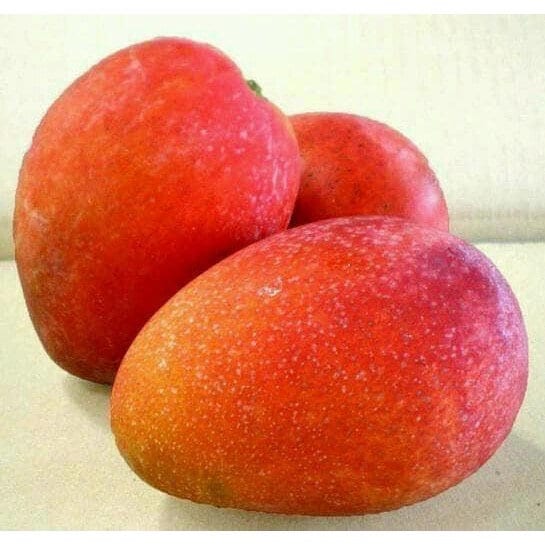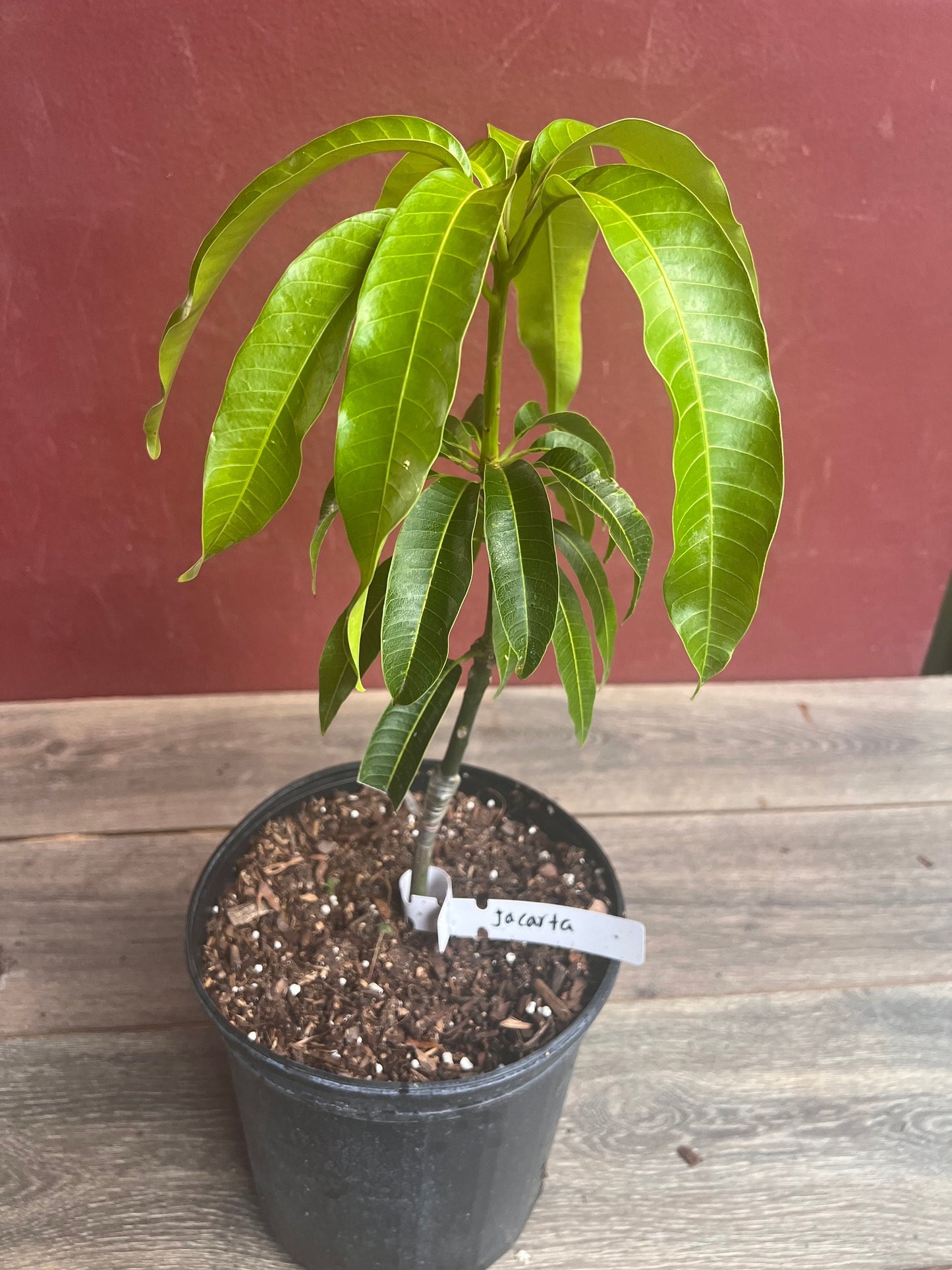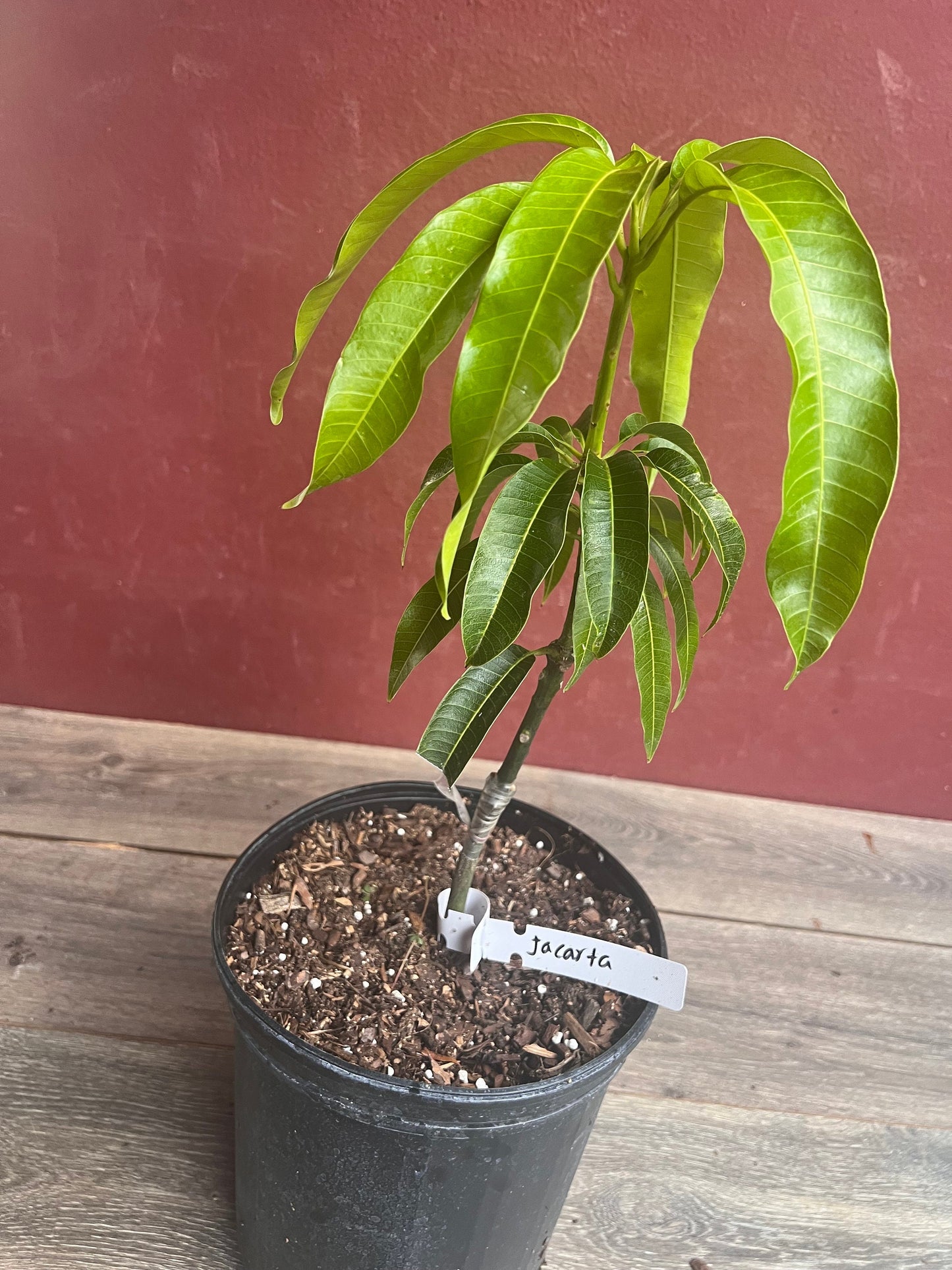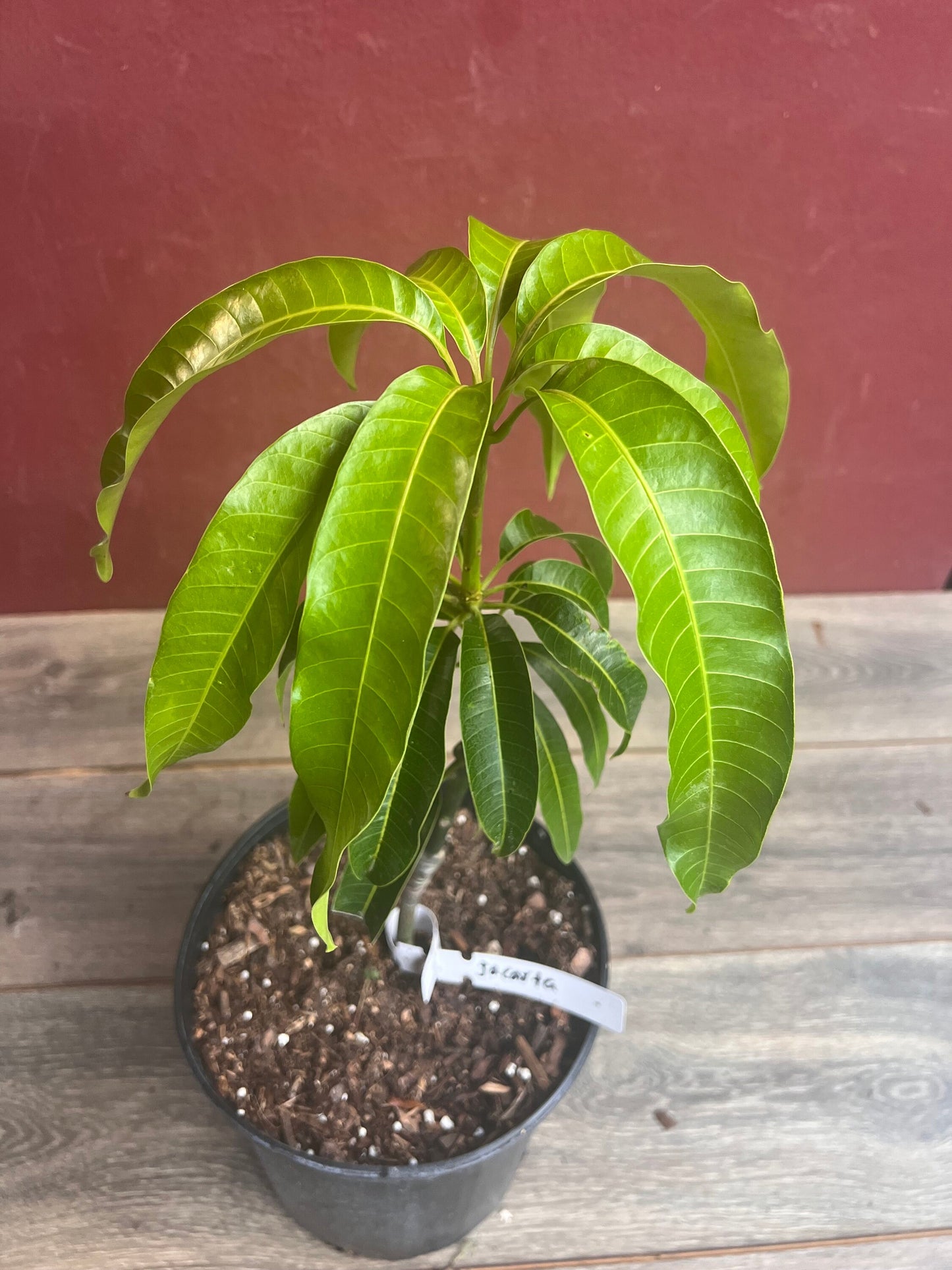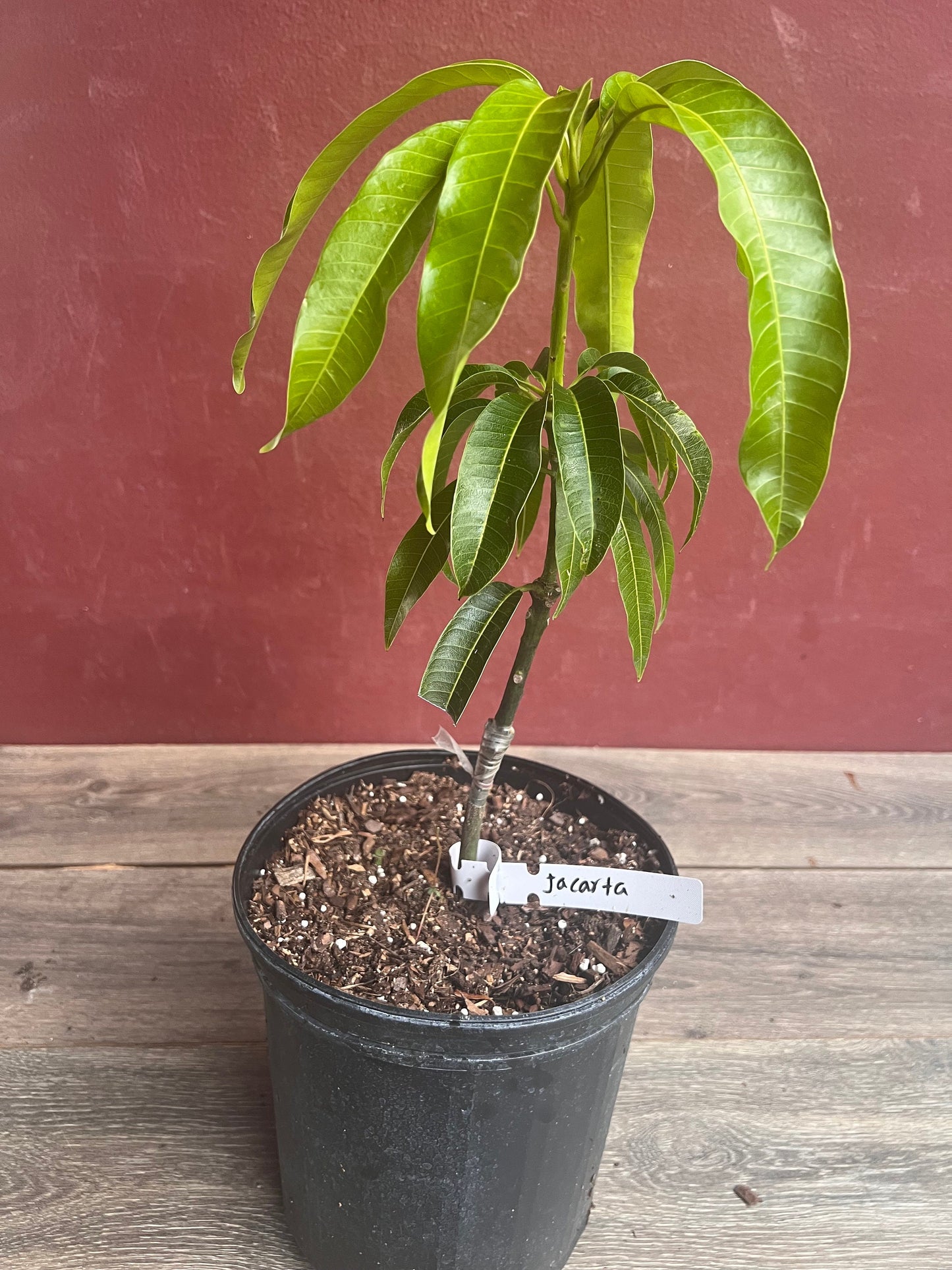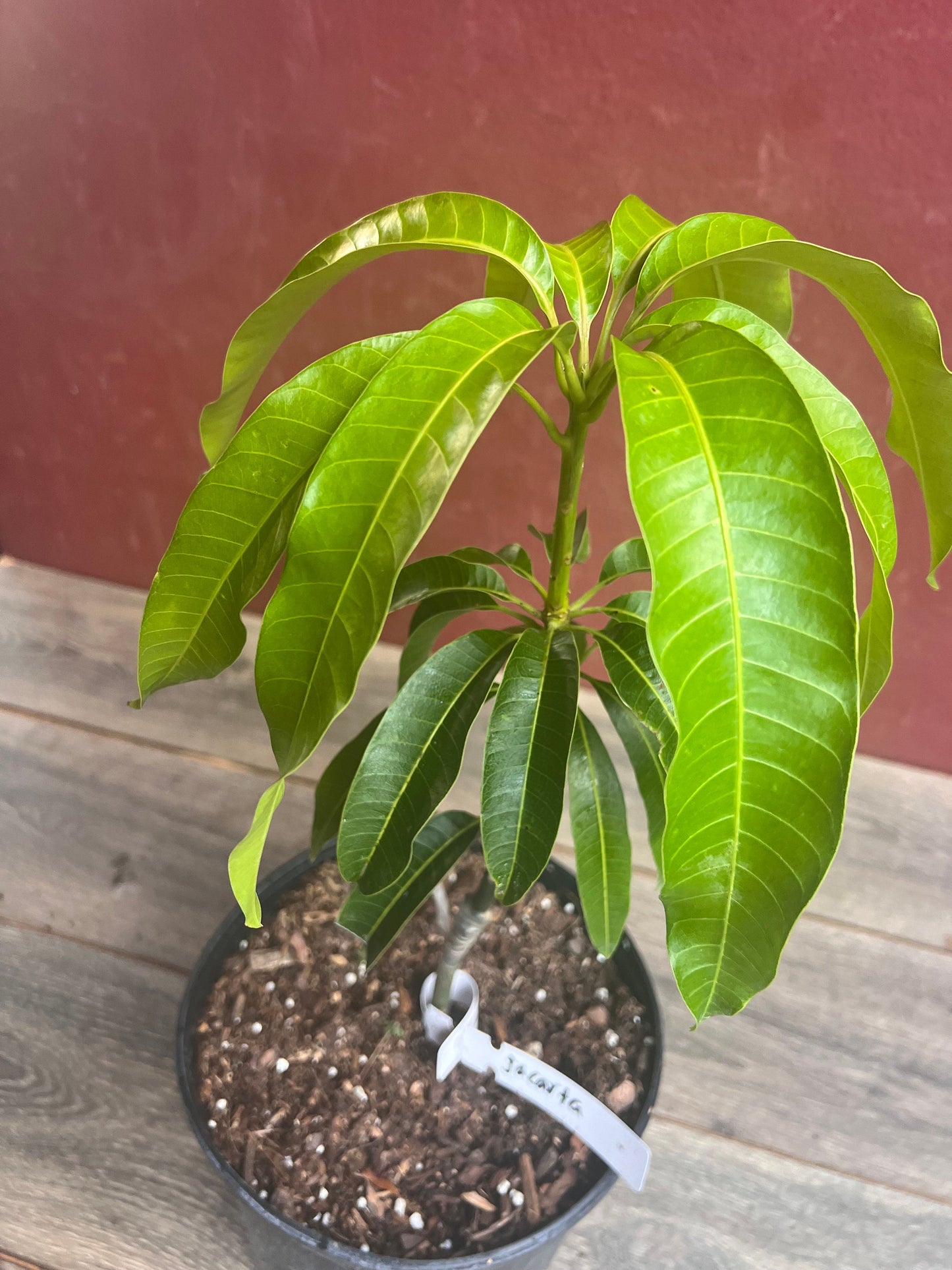Jakarta Mango in 3 gallon, grafted, No Ship to CA and HI
Jakarta Mango in 3 gallon, grafted, No Ship to CA and HI
Couldn't load pickup availability
Note: You will receive Jakarta Mango in 3 Gallon pot similar to the pictures
The Jakarta Mango is a tropical fruit variety known for its large size, sweet flavor, and smooth, non-fibrous flesh. Native to Southeast Asia, this mango is highly prized for its vibrant orange skin and rich, aromatic taste. The flesh of the Jakarta Mango is juicy and fiberless, making it perfect for eating fresh, blending into smoothies, or adding to desserts. It has a mildly tangy-sweet flavor with a subtle floral aroma. The tree is medium to large in size, with dark green leaves and a dense canopy that provides shade and a bountiful harvest. Jakarta Mangoes are typically harvested in the summer months and are celebrated for their high-quality fruit and excellent storage ability once ripened. The tree thrives in warm tropical climates with plenty of sunlight and well-drained so
1. Light:
- Jakarta Mango trees require full sunlight to grow and produce high-quality fruit. Plant them in a location that receives at least 8–10 hours of direct sunlight per day. Sunlight is essential for fruit production and to promote healthy growth.
2. Soil:
- Mango trees prefer well-draining, sandy loam soil. The soil should be slightly acidic to neutral (pH 5.5 to 7.5). Good drainage is essential to prevent root rot, so make sure the tree is planted in an area where water doesn't pool. If your soil is clay-heavy, amend it with sand or organic matter to improve drainage.
3. Watering:
- Watering should be consistent but not excessive. Mango trees are drought-tolerant once established, but young trees need regular watering. Water the tree deeply, allowing the soil to dry out slightly between waterings. Overwatering can lead to root rot, so make sure the soil drains well. During the dry season, ensure the tree gets enough water to support fruit development.
4. Temperature:
- Jakarta Mangoes thrive in warm tropical climates. The ideal temperature range is between 77°F and 95°F (25°C to 35°C). They are not frost-tolerant, so if you live in a region where temperatures drop below 40°F (4°C), you should consider planting the tree in a container or bringing it indoors during the colder months. Protect the tree from strong winds, as they can damage branches.
5. Fertilizing:
- During the growing season (spring to summer), feed your Jakarta Mango tree with a balanced fertilizer that is high in nitrogen, phosphorus, and potassium to encourage healthy growth and fruit production. Use a slow-release fertilizer or organic compost. Avoid fertilizing during the dormant period (fall to winter), as the tree is not actively growing.
6. Pruning:
- Prune the Jakarta Mango tree to maintain its shape, remove dead or damaged branches, and improve air circulation. Pruning helps the tree focus energy on producing fruit. You can also prune away any suckers or water shoots that grow from the base of the tree. Prune in late winter or early spring before the new growth begins.
7. Pollination:
- Mango trees are self-pollinating, meaning they don’t require another tree for pollination. However, cross-pollination can sometimes improve fruit yield. The tree produces small, fragrant flowers that attract insects, such as bees, to aid in pollination. Ensure there are plenty of pollinators in the area to increase the chances of fruit set.
8. Pests and Diseases:
- Jakarta Mango trees can sometimes be affected by pests like mealybugs, aphids, and scale insects. Regularly inspect the tree for signs of pests and treat them with insecticidal soap or neem oil if necessary. Additionally, the tree is susceptible to anthracnose and powdery mildew, so ensure good air circulation around the tree and avoid overhead watering to reduce humidity around the plant.
9. Harvesting:
- Jakarta Mangoes typically take 3-4 years to bear fruit after planting. The fruit is ready to harvest when it turns from green to a deep yellow-orange color, and the flesh gives slightly when pressed. The fruit can be harvested once fully ripe or allowed to ripen off the tree. Be sure to handle the fruit gently, as mangoes can bruise easily.
10. Container Growing:
- If you live in a cooler climate, you can grow a Jakarta Mango tree in a large pot and bring it indoors during the winter months. Ensure the container has good drainage, and use a well-draining, nutrient-rich potting mix. A container-grown tree will need regular watering and feeding during the growing season, but it will still require plenty of sunlight.
By providing the right care and attention to your Jakarta Mango tree, you can enjoy its delicious fruit and attractive, tropical appearance in your garden or home.
Share
